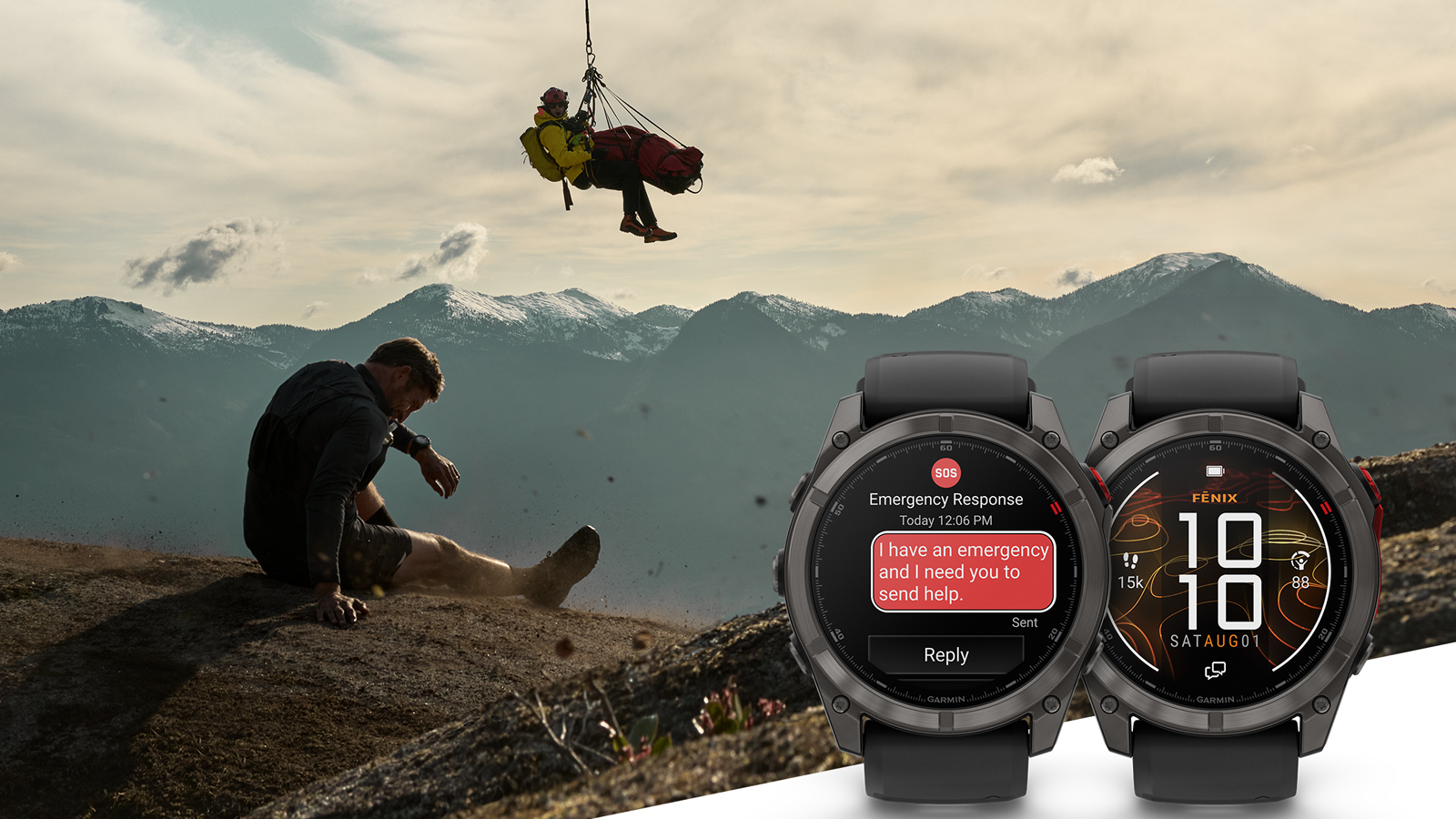Garmin has made the brightest smartwatch ever built.
The Fēnix® 8 Pro MicroLED, unveiled earlier this month and on sale now, raises the bar for features and functionality, many of which are made possible, or at least practical, by a mighty touchscreen made up of over 400,000 individual LEDs, which at its brightest setting generates up to 4,500 NITs of light.
If that means little to typical analogue watch lover, it is more than twice as bright as the 2,000 NITs of the very latest Series 11 Apple Watch and 50% more luminous than the Super Retina XDR display of Apple’s newest iPhone.
Garmin’s latest upgrade to the Fēnix adventure watch family includes a broad range of options. The Fēnix 8, Fēnix 8 Pro and Fēnix E all have the more common AMOLED displays used by both Samsung and Apple for their latest smartwatches. A new Fēnix 8 Solar harnesses the power of light to keep its battery charged for up to 28 days in smartwatch mode.
They offer an almost identical collection of sport, fitness and lifestyle features – more on these later – and come in a choice of 43mm, 47mm or 51mm cases in titanium or slate grey DLC steel for the £599 entry-level Fēnix E.
Fēnix 8 Pro and MicroLED are the first to feature inReach® technology for satellite and cellular technology that means they do not need to be tethered to a mobile phone to stay connected to the wider world. Satellite connectivity is particularly important for extreme adventurers who may need share their location and stay in touch via phone or messaging apps from the remotest corners of the world.
“Fēnix 8 Pro is changing the game for smartwatches. This new lineup is full of breakthrough innovations, bringing life-changing inReach technology to the wrist to help keep athletes and adventurers in touch with their family and friends and introducing the first-ever ultra-bright MicroLED display to a smartwatch so users can see their maps, stats, health and wellness metrics and more like never before,” says Susan Lyman, Garmin vice president of consumer sales and marketing.
Every new product or upgrade to Garmin’s broad family of connected watches builds on all that have gone before, and none have veered away from delivering features and functionality demanded by athletes and adventurers with push button or touchscreen controls.
One of these demands has been for ever-improving displays that show, as closely as possible, the same information and imagery as a smartphone: weather forecasts, maps, vital performance data and life-preserving emergency services, to name just a few.
That can require a more substantial touchscreen, hence the 51mm form of the top-end and the MicroLED display that is not only the brightest ever made, but also has the widest viewing angle of any smartwatch on the market.
Garmin’s full suite of performance, navigation, health, wellness, and communication features are all on board including endurance score, hill score, daily suggested workouts, preloaded TopoActive Maps, dynamic round-trip routing, the Garmin ECG App3, sleep coach, Garmin Pay™, safety and tracking features and more.
Fēnix 8 Pro – AMOLED comes in 47mm and 51mm sizes, gets up to 27 days of battery life in smartwatch mode and starts at £1,029.99. Fēnix 8 Pro – MicroLED comes in a 51mm size, gets up to 10 days of battery life in smartwatch mode and is on sale for £1,729.99.
A brief history of Garmin Smartwatches
Garmin made its first wearable for athletes in 2003 with the Forerunner 201, a transformative product with onboard GPS that gave real-time data on pace, distance and location for runners on a monochrome LED screen.
Three years later, the Forerunner 305 was a great leap forward thanks to its far more elegant design and the added functionality of a heart rate monitor when paired with a chest strap sensor.
Garmin introduced tracking features for running, swimming and cycling — three disciplines for triathletes — on a single device in the Forerunner 310XT, which launched in 2010.
The first generation Fenix arrived in 2012, still with a monochrome LED display, and became a firm favourite with athletes thanks to its watch-like form and upgraded multisport tracking features from the Forerunner family.
The early 2010s saw evolution of the Forerunner and Fenix families; with every upgrade making them more elegant and easy to wear; improving battery and screen technology; and adding functionality for its loyal sporty customers.
Garmin leant into its leadership in marine navigation and communication equipment in 2013 when it launched the first Quatix watches, which effectively shrank down the onboard displays relied on by sailors into a wearable wristwatch.
Garmin unveiled the Epix collection in 2015, the same year that the first Apple Watch introduced wrist-borne computer power to the masses. Like Apple, Garmin recognised there was a market for its products to be worn all day, every day, and by people who weren’t in training for a marathon or Himalayan expedition. The Epix collection was the first to use AMOLED displays, which have proved perfect for navigation within towns and cities, across frozen tundra and scorching deserts, or around the 18 holes of a golf course.
Descent watches were added in 2017 with a focus on water resistance for swimming and diving; Instinct smartwatches arrived a year later with military-grade toughness and market-leading battery life and even children were invited into the Garmin connected world with the fun and colourful Bounce range.
Garmin took a leaf out of the Swiss watchmakers’ playbook in 2019 with the MARQ collection, which introduced luxury materials and high-end finishing to devices bristling with sensors and the latest applications for adventurers on land, air or sea.
Substance and style also combined in more affordable Vivomove and Lily collections; rounding out a peerless portfolio that has always been grounded in the needs of athletes and adventurers, but have the aesthetic appeal to be worn by anybody wanting to stay connected while keeping fit.


